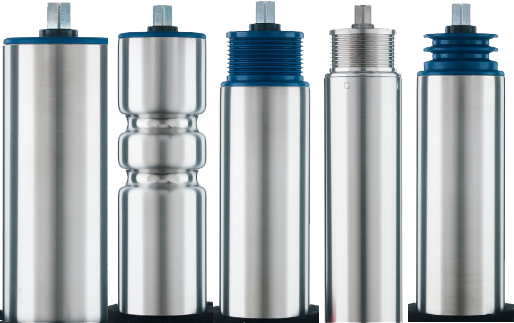Senergy vs. Senergy Ai

The Senergy and Senergy Ai motor-driven rollers have much alike: their names and basic functions. But some added features make for some beneficial differences between the two.
What's alike?
Basic functions and design
The rollers and controllers of each do the same basic job: repeatable linear motion for conveying products within zero pressure accumulation, roller transportation or intralogistics conveying. A planetary gear box inside increases the life of the roller gears while keeping the rollers compact and light. Both versions also only have 11 gearbox combinations to make ordering and keeping an inventory much more manageable.
High starting torque
Both have significant high starting torque which is very beneficial for conveying product in curves, inclines, or any other critical application requiring such torque. Senergy and Senergy Ai can both move products up to 1,000 feet per minute. The higher output torque means heavier loads at faster speeds. This results in more product being moved along your assembly line or out the door. Their ranges and performance characteristics are suitable for speeds between 6 to 969fpm and starting torque up to an amazing 215 in/lbs.
Save on Energy and Sound
The one aspect the entire Senergy line is known for is providing high power with less power and noise. Depending on the application you could potentially use 20% and up to 60% less electrical power. You’ll also be able to have an actual conversation next to the conveyor without raising your voice. The noise output of both Senergy versions is 45 dBA — quieter than most normal conversations, which are 60 dBA.
Two Positioning Options: Time or Distance
PulseRoller designed all of its conveyor controllers to provide engineers the option to program positioning either by distance (millimeters) or time.
This is valuable if you're trying to position a load or device that you are driving with the motor. While engineers are used to dealing with time-based controllers (as most manufactured models are time-based), there's often a great deal of trial and error involved in getting the load to the optimal position.
With a distance-based system, you can reach optimal position faster as you only have to measure where your load starts and where you wish it to end.
What's different?
The cable and connector
Both products continue to use standard connectors and extension cables, that can be purchased from most electrical store suppliers. But which standard is where they differ. Senergy is designed for use with jst PCB connectors, a connector long used in electronics. The Senergy Ai, on the other hand, works with the M8-style connectors, which is more popular and more robust.
The number of wires
Like other PulseRoller Ai technology, Senergy Ai, simplifies conveyor installation by reducing the number of wires from the controller to the motor to four from the traditional eight or nine. This has been accomplished by using a microcontroller inside the motor which analyzes the position and sends that to the Ai control with one wire instead of three wires. Our standard Senergy roller relies on the traditional eight wires.
Advanced intelligence
This is the most significant difference between Senergy and Senergy Ai. A microprocessor inside Senergy Ai's motor drive holds and processes important data about the motor, such as:
- Part Number
- Serial Number
- Manufacturing Date
- Actual Motor Temperature
- Run Cycle Time
- Overload Count
- Gearbox Ratio
- Motor Positioning Data
You no longer have to take the roller out of the conveyor frame to see the part number or serial number. You just click on the motor icon on the EasyRoll screen with the accompanying PulseRoller software. You can now get important information about the motor such as overall run time, overload counts, and motor temperatures all with a click of a mouse.
Certification
Senergy Ai and Senergy is certified for both UL/ETL and CE.
Summary
Each has their unique differences, but regardless of which option you chose, Senergy and Senergy Ai are designed to give you the control you need with the lowest possible amount of power.
